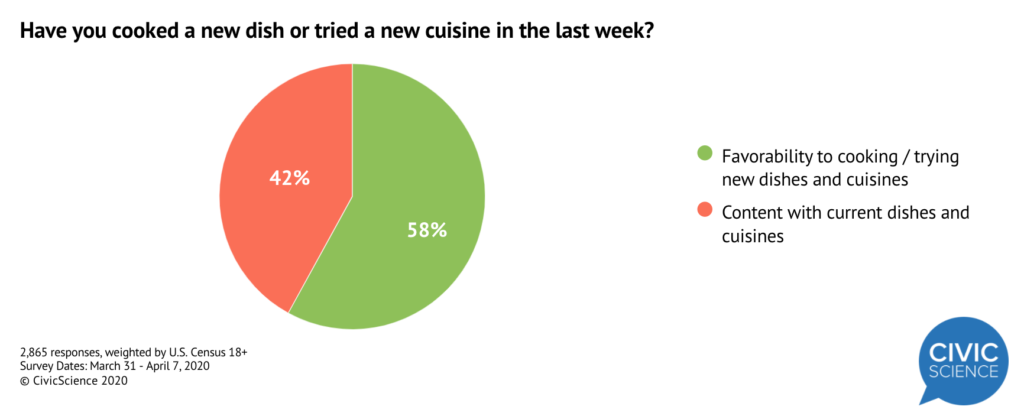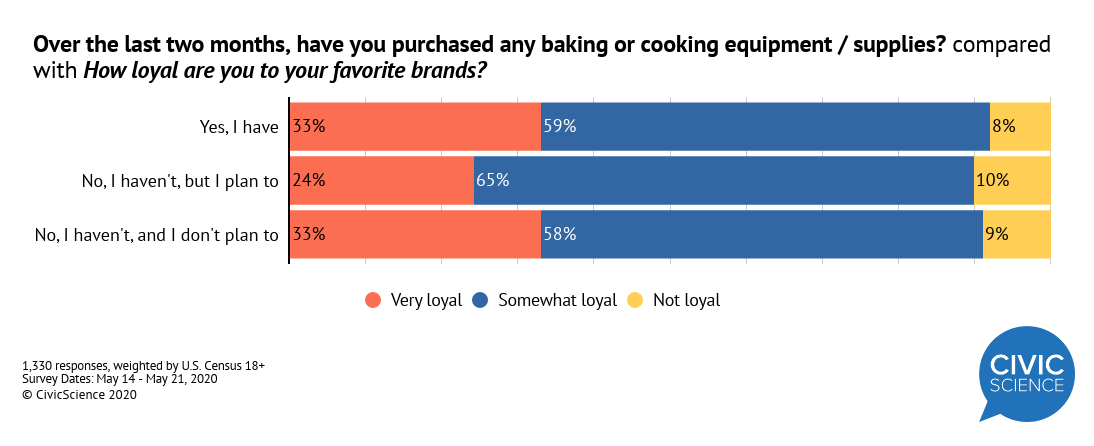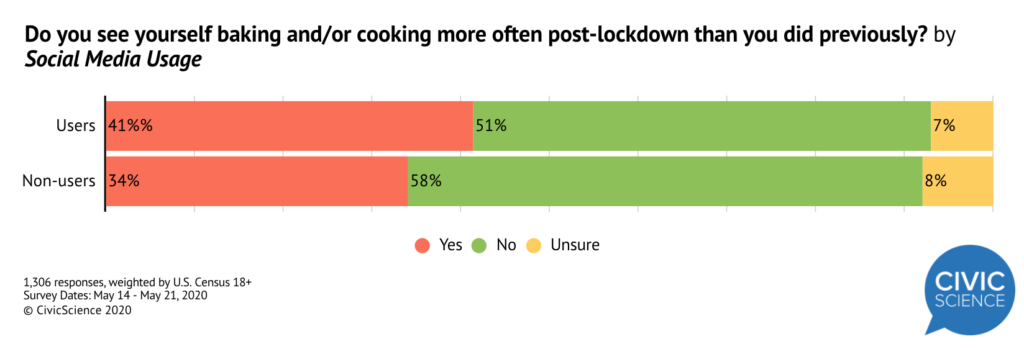In the last few months, Instagram has lit up with snapshots of perfect sourdough loaves and bright glass jars of pesto. The aroma of banana bread practically wafts through any casual Facebook scroll and, for a while, it seemed like everyone was sharing love for posts of homemade “lockdown linguine.” While baking and cooking certainly had a moment during COVID-19, especially on the internet, you have to wonder how far these behaviors will trend beyond quarantine cuisine?
With coronavirus lockdowns lasting more than three months, most Americans had no choice but to get cooking in their own home kitchens. Aside from pre-made frozen meals and take-out fare, many folks experimented with baking, cooking, and trying new foods in order to beat the daily meal monotony.
According to CivicScience polling of almost 2,900 U.S. adults just a few weeks into lockdown, more than half of respondents were already interested in trying new dishes and cuisines.
As self-isolation continued, an ambitious 16% of quarantined culinarians even favored the idea of testing their skills with baking and cooking challenges. Surprisingly, Gen X foodies were more likely to brave a kitchen competition than their Millennial counterparts.
To that point, overall confidence does seem to be up among adventurous home cooks. Beyond fermenting their own sourdough starters, a small group of U.S. adults are trying various methods of food preservation. Eighty-two percent of respondents who indicated interest in at-home fermentation methods during quarantine also tried (or intend to try) experimenting with pickling and canning homemade goodies like sauces, condiments, and beverages.
There appears to be a consumer-driven element percolating, too. Home cooks and bakers who’ve invested in new cookware and supplies seem to love their favorite brands just as much as creating fun dishes. Ninety-two percent of U.S. adults who’ve purchased new cookware and bakeware during COVID-19 show some degree of brand loyalty, with a third of those respondents indicating major brand devotion.
And, among those who intend to continue cooking and baking more often than prior to lockdown, they love sharing about their favorite products online (76%).
As it turns out, all these social peacocks who are craving connection could be supplementing their kitchen creations as proxies for in-person interactions and entertainment. While it’s not surprising that social users who report cooking and baking more during lockdown would bend to their feeds for appetizing inspiration, their increased usage may only be temporary while they simmer in seclusion. CivicScience data show that not everyone in this group is keen on flexing their home-kitchen capabilities in the future.
Looking forward, there appears to more to this mix than previously expected. Even the majority of U.S. Adults who enjoy cooking don’t plan on continuing these activities to the same extent as they had during CV closures, which could point to an overall eagerness to escape the galley as restaurants and cafes reopen.
Only time will tell if these are lasting trends or temporary methods of necessity. Would it be so surprising if, while people love sharing their newfound cooking and baking skills with the world on social media, almost everyone is excited to take a baking break and dine out in restaurants where there are more opportunities to connect in person? Bonus: no dishes to clean.















